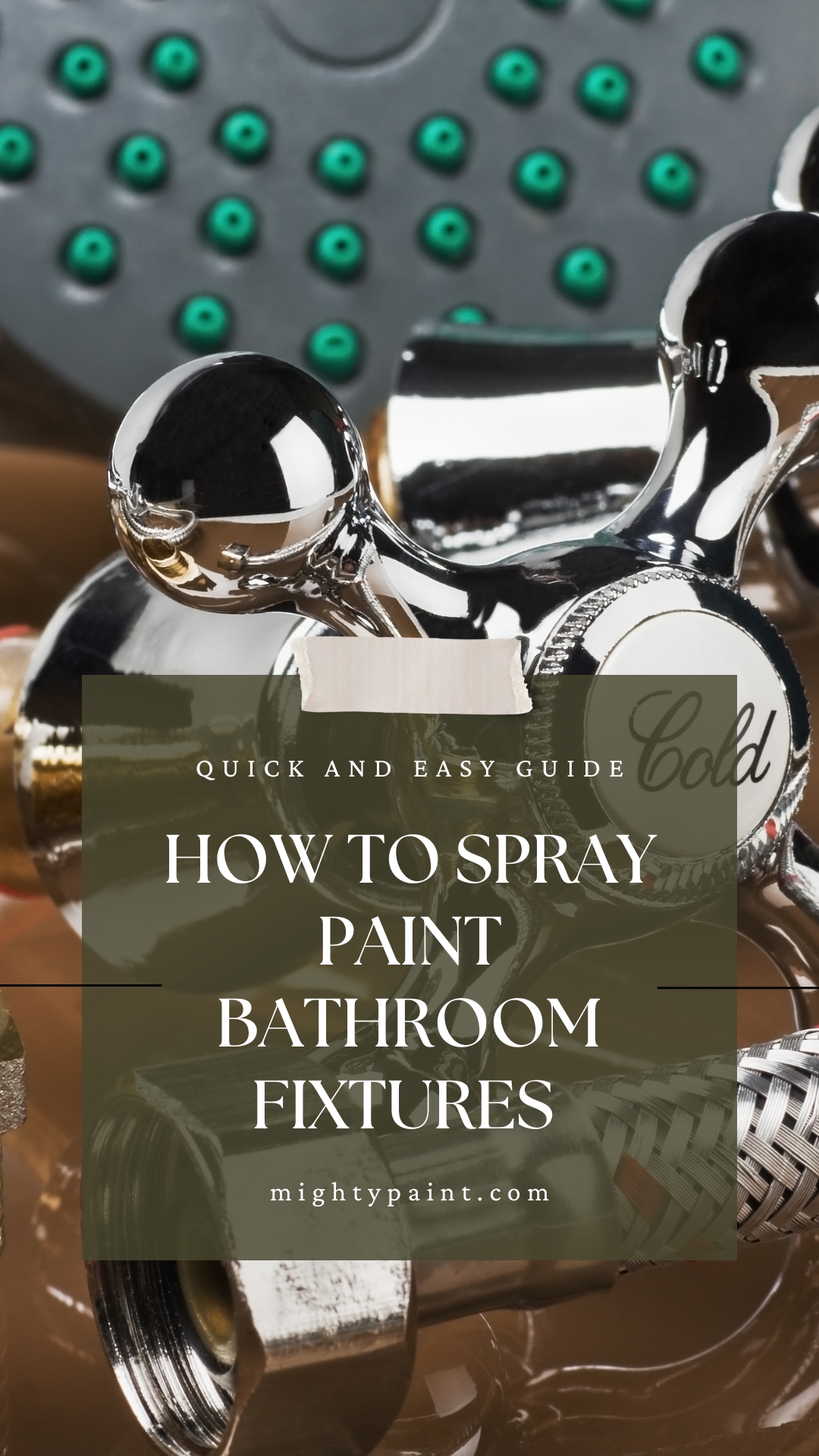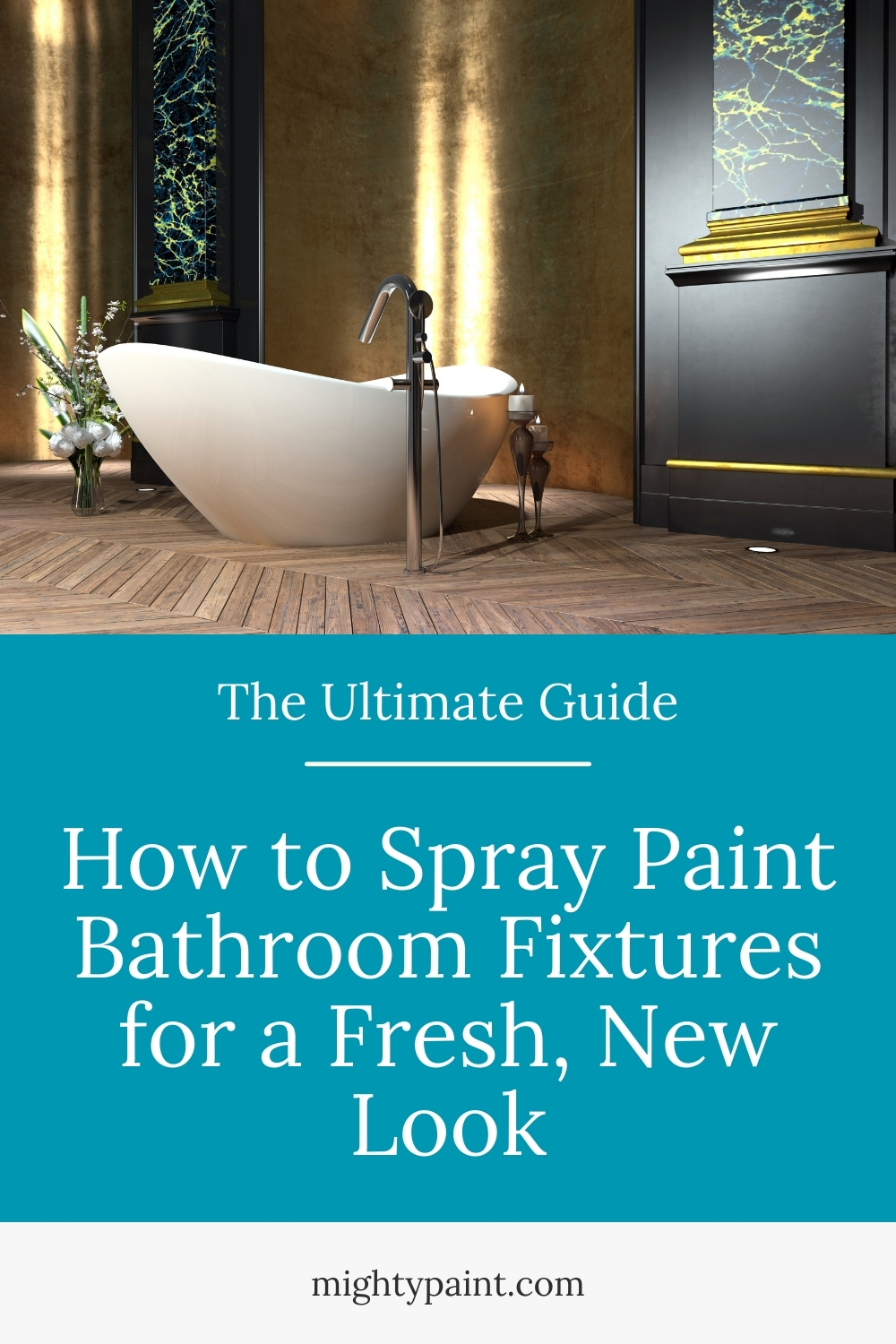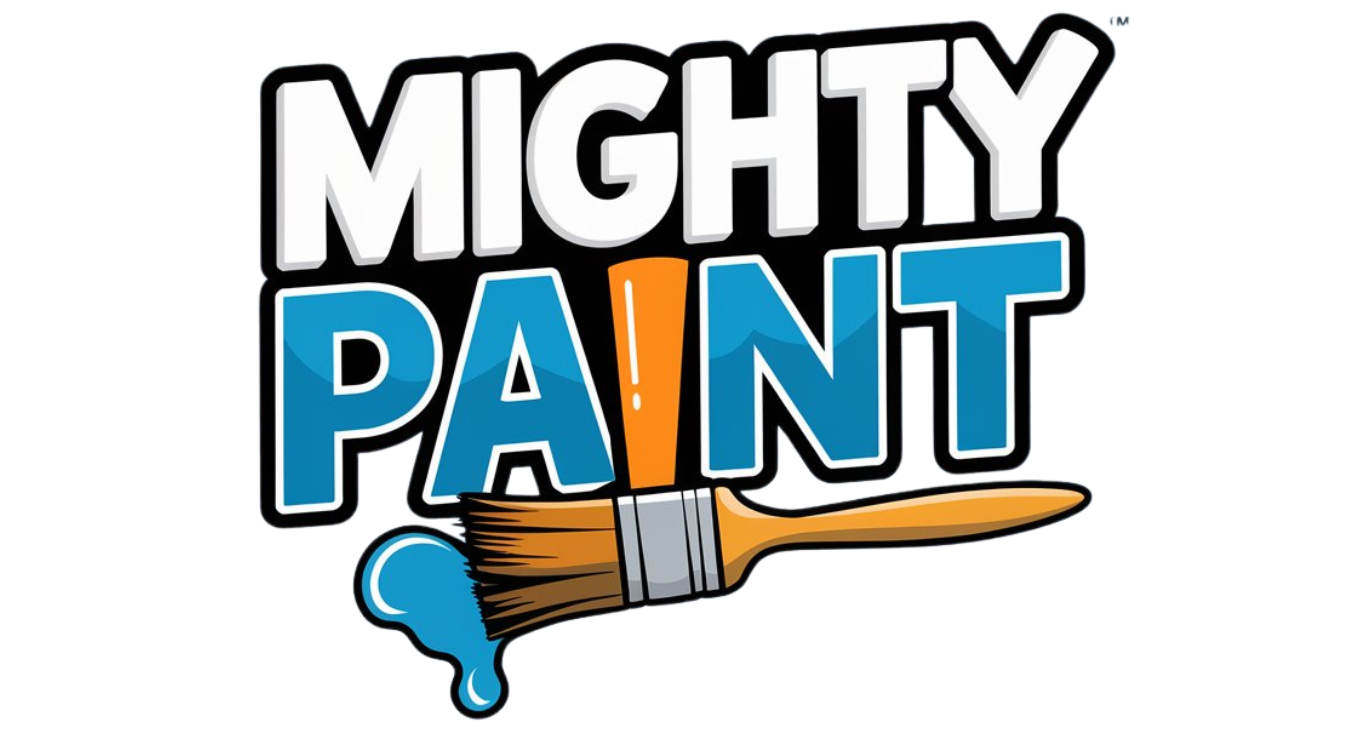How to Spray Paint Bathroom Fixtures: A Quick and Easy Guide
Thinking about giving your bathroom a fresh, new look without breaking the bank? Spray painting your bathroom fixtures can be a game changer. It’s an easy and affordable way to revamp those old faucets and fittings. With just a bit of spray paint, you can transform dull, outdated bathroom fixtures into modern accents that pop.

You’ll want to sand the surfaces first to ensure the paint adheres well. Don’t forget the importance of using a primer for that sleek, long-lasting finish. Choose a good quality paint specifically made for metal surfaces, and remember, light even coats are key.
Worried about the durability? Fret not. When done right, these spray-painted fixtures can last quite long. The DIY approach not only saves money but gives you the joy of adding a personal touch to your space. Ready to dive in? Let’s get started!
Essential Materials and Tools
To ensure your spray painting project goes smoothly, you need the right materials and tools. This includes selecting the appropriate spray paint, gathering all necessary preparation supplies, and ensuring you have the proper safety gear.
Choosing the Right Spray Paint
Choosing the correct spray paint is essential for a professional finish. For bathroom fixtures, you will typically need a spray paint designed for metal or plastic surfaces. Brands like Rustoleum are known for their durability on metal.
- Metal Fixtures: Opt for a metal spray paint or an automotive primer for lasting results.
- Plastic Fixtures: Use spray paint specifically formulated for plastic.
To prevent chipping and ensure the paint adheres well, always use a primer before applying the color coat.
Preparation Supplies
Preparation is key to a long-lasting finish. Before you begin, gather the following supplies:
- Sandpaper: Use medium-grit sandpaper to roughen the surface.
- Cleaner: A good cleaner will remove any grease or grime.
- Tack Cloth: This helps remove fine dust and particles.
Other tools and materials include:
- Primer: Essential for a smooth base.
- Painter’s Tape: Use to protect areas you don’t want to paint.
Make sure to clean and dry all the surfaces thoroughly after sanding and before painting.
Safety Gear
Safety should always come first when spray painting. Proper safety gear is crucial to protect yourself from fumes and debris.
- Rubber Gloves: Protect your hands from paint and chemicals.
- Respirator: Use a respirator to avoid inhaling harmful fumes. A paper mask is not enough.
- Protective Eyewear: Shields your eyes from splashes and dust.
Always work in a well-ventilated area or use a fan to disperse fumes. Having the right safety gear will make your project safer and more pleasant.
Preparation Stage
Before you start spray painting your bathroom fixtures, it’s important to prepare them correctly. This will ensure that the paint adheres properly and lasts longer. Let’s go through the necessary steps.
Cleaning the Fixtures
Start by gathering your cleaning supplies: mild soap, detergent, warm water, a sponge, and a soft cloth. Mix the soap or detergent with warm water to create a cleaning solution.
Thoroughly clean your fixtures with a sponge or cloth soaked in this solution. Pay extra attention to crevices and hard-to-reach areas, as dirt and grime can affect paint adhesion.
After scrubbing, rinse the fixtures well with clean water to remove all soap residue.
Tip: You may consider using a toothbrush for stubborn areas and ensuring every part is clean before moving on to the next step.
Sanding for Better Adhesion
Next, you need to sand the fixtures to create a rough surface which helps the paint stick better. Use fine-grit sandpaper, around 220 grit, to gently sand the surfaces you want to paint.
Ensure you cover metals, plastics, and any other materials present. Sanding removes the glossy finish and provides a better grip for the primer and paint. Remember, you don’t need to sand too hard. Just enough to slightly roughen the surface.
Note: If you’re dealing with rusty areas, make sure to sand them thoroughly to remove any loose rust. This will prevent further corrosion under the paint.
Applying the Primer
Applying primer is essential for a smooth paint finish. Choose a primer designed for the type of material you’re working with, whether metal or plastic. Then, hold the spray can about 6 to 12 inches away from the fixture and apply the primer in a side-to-side motion to prevent drips and runs.
Apply light, even coats and let each coat dry as per the instructions on the can. Usually, it takes about 15 to 30 minutes for each coat to dry. Generally, one to two coats are sufficient but follow the specific recommendations from the primer manufacturer.
Pro Tip: Use painter’s tape to cover areas you don’t want to paint, and ensure edges are scored nicely for a sharp paint line.
Spray Painting Techniques

To get the best results when spray painting bathroom fixtures, you need to focus mainly on achieving a smooth coat, minimizing drips and overspray, and managing drying time and re-coating.
Achieving a Smooth Coat
A smooth coat gives your fixtures a professional look. Start by cleaning the fixtures thoroughly to remove any dirt or oil. Sanding the surface lightly with 180 grit sandpaper helps the paint adhere better.
Using a primer is crucial; it ensures the paint sticks well and lasts longer. Hold the spray can 6 to 12 inches away from the surface, and apply in a side-to-side motion. Light, even coats prevent blobs. Multiple thin layers are better than one heavy coat.
Minimizing Drips and Overspray
Drips and overspray can ruin your project, so you need to keep them in check. To avoid them, always keep the spray can moving while you paint. Apply the paint in thin, consistent layers. Holding the can too close can cause drips, so stick to the 6 to 12 inches rule.
Use painter’s tape to protect areas you don’t want painted. Spray in a well-ventilated space to avoid excessive overspray settling on other surfaces. You can also cover nearby objects with plastic sheets or drop cloths for extra protection.
Drying Time and Re-coating
Proper drying time is essential for a durable finish. Allow each coat to dry before applying the next one. Generally, spray paint dries to the touch in about 20 minutes, but it’s best to wait at least an hour before adding another coat.
Refer to the paint manufacturer’s instructions for specific drying times. After the final coat, let the fixtures cure for at least 24 hours. This ensures the paint fully hardens and adheres well, providing a long-lasting finish.
Post-Painting Steps

Once you’ve painted your bathroom fixtures, it’s crucial to take steps to protect the new finish and ensure it lasts. You need to apply protective top coats and ensure proper ventilation during the drying process.
Applying Protective Top Coats
To make your paint job durable, you should use a top coat like lacquer or a clear sealant. These layers protect against moisture and prevent chips. Choose a product designed for the same type of paint you used, typically noted on the can.
Apply the top coat in thin, even layers. Wait for each layer to dry before applying the next. Aim for at least two to three coats for a lasting finish. Remember, patience is key—rushing this step can lead to uneven texture and poor protection.
A good rule of thumb is to keep the spray can 6 to 12 inches away from the surface to avoid drips. Using light, even strokes, start and end each spray motion beyond the edges of the object.
Ensuring Proper Ventilation During Drying
Lastly, make sure your bathroom has proper ventilation while the fixtures dry. Fumes from spray paint and top coats can be strong and potentially harmful. Open windows and use fans to circulate air.
If possible, use an exhaust fan to draw fumes out of the bathroom. Proper ventilation not only protects your health but also helps the paint dry faster and more evenly.
Typically, paint can take 24 to 48 hours to fully cure, so keep the area ventilated during this time. Avoid using the fixtures until they are completely dry to avoid any damage to the fresh paint.
Finishing Touches

After painting your bathroom fixtures, you’ll need to put everything back in place and tidy up your workspace. Doing this right ensures a professional look and a neat finish.
Reassembling the Fixtures
First, make sure the paint is completely dry. Depending on the paint and humidity, this can take around 24 hours. Use steel wool to gently smooth out any rough spots, but don’t go too hard.
Next, start putting the fixtures back where they belong. If you disassembled anything like the vanity or knobs, reattach them carefully. Double-check that everything is securely fastened and aligned properly.
Use a soft cloth to wipe any fingerprints or smudges. This helps keep your freshly painted fixtures looking their best. A quick polish can make a big difference in the final appearance of your bathroom makeover.
Cleaning Up Your Workspace
Cleaning up is an important part of any DIY project. Start by gathering any newspaper or drop cloths you used to protect your surfaces. Fold them carefully to avoid spreading any leftover paint.
Dispose of any paint cans and brushes according to your local waste disposal guidelines. Leftover paint can be hazardous, so use proper disposal methods. Use a vacuum or broom to clean up any dust or debris.
Finally, store any leftover paint in a cool, dry place. Clearly label the cans for future touch-ups. This way, you’ll have the right color handy if you need it. A clean workspace makes future projects easier and keeps your home looking tidy.
Design Tips and Ideas

When spray painting bathroom fixtures, choosing the right color scheme and adding personal touches can make a huge difference. Here are some tips to help you achieve the best design possible.
Choosing the Right Color Scheme
Selecting the right colors is crucial to ensure your bathroom looks cohesive and stylish. Think about the overall theme of your bathroom. Do you prefer a modern, classic, or rustic look? Bold colors like matte black or deep blue can give a modern look, while polished brass or satin finishes add a touch of classic elegance. If you’re unsure, metallic finishes like chrome or brushed nickel are versatile and work with almost any design.
For smaller bathrooms, light colors like white or soft pastels can make the space feel larger. Keep in mind existing elements like tiles, countertops, and shower curtains to create a harmonious look.
Adding Personal Touches to Your Fixtures
Adding personal touches to your bathroom fixtures can set your space apart. Consider stenciling patterns or designs onto your fixtures before sealing them. This can add a unique element that reflects your personality.
If you are feeling creative, using porcelain paint to add delicate patterns or shades can bring a softer, more customized look. Mix and match different metallic finishes for a more eclectic feel. For instance, brass combined with a satin finish can add both warmth and sophistication.
Changing fixture handles or adding small decorative elements can also elevate the overall look. Don’t be afraid to experiment with textures and finishes to personalize your bathroom space.
Maintaining Your Spray Painted Fixtures
To keep your spray painted bathroom fixtures looking fresh, it’s important to follow certain maintenance steps. These include routine cleaning and occasional touch-ups to maintain the appearance.
Routine Cleaning Recommendations
Regular cleaning is key. Use a soft cloth and mild soap to wipe down your spray painted faucets and light fixtures. Harsh chemicals can damage the paint, so avoid bleach and abrasive cleaners.
Steps:
- Mix mild soap with water.
- Dampen a soft cloth with the mixture.
- Gently wipe the fixtures.
- Dry with a clean towel.
Routine cleaning helps prevent grime build-up. For stubborn spots, use a soft brush but be gentle to avoid damaging the paint. Wiping down fixtures weekly can save you time and effort in the long run.
Touch-Up Tips
Over time, the paint may chip or fade. To keep your fixtures looking their best, touch up any damaged areas promptly.
Touch-Up Steps:
- Lightly sand the chipped area.
- Clean with a damp cloth.
- Reapply spray paint in thin, even coats.
- Let it dry completely.
For best results, use the same brand and color of spray paint you originally applied. Store any leftover paint in a cool, dry place for future touch-ups. This DIY project can extend the life of your fixtures and save money over replacements.
Frequently Asked Questions
Spray painting your bathroom fixtures can completely change the look of your space. Below, you’ll find answers to some common questions about this project.
What are the best practices for ensuring durability when spray painting bathroom fixtures?
To ensure durability, always start by cleaning and sanding the fixtures well. Apply a primer, then spray in light, even coats. It’s crucial to allow each coat to dry thoroughly before painting the next one. Finally, seal with a clear spray lacquer to protect the finish.
Can I achieve a high-quality finish when spray painting my bathroom fixtures black?
Yes, you can achieve a high-quality black finish. The key is to use a high-quality spray paint specifically designed for metal surfaces. It’s also helpful to apply multiple thin coats rather than one thick coat. This prevents drips and runs.
Are there specific steps to follow when spray painting bathroom fixtures to achieve a white finish?
For a white finish, follow these steps: clean and sand the fixtures, apply a white primer, and then use a white spray paint designed for metal. Make sure to apply the paint in light, even coats. After the final coat, seal with a clear lacquer for added protection.
Which type of spray paint provides the best results for a gold finish on bathroom fixtures?
Acrylic or epoxy spray paints usually provide the best results for a gold finish. Brands like Rustoleum offer metallic gold spray paints that are durable and have a nice shine. Be sure to follow the same preparation and application steps as for other colors.
What should I consider when choosing paint for a matte black effect on bathroom fixtures?
When choosing paint for a matte black effect, look for a high-quality, matte finish spray paint designed for metal. It’s important to use a primer to ensure the paint sticks well. Apply in light, even coats, and finish with a clear matte sealant to protect the paint.
How can I safely spray paint bathroom fixtures without causing damage to the surrounding area?
To protect the surrounding area, use painter’s tape and plastic sheeting to cover any surfaces you don’t want painted. Score tape edges with a knife for sharp lines. Use drop cloths on the floor and make sure the room is well-ventilated. Always wear protective gear like gloves, masks, and eyewear.


